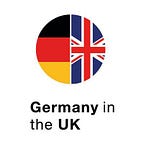Flensburg — Germany’s northernmost city is the third largest city of Schleswig-Holstein
Flensburg is the third largest city in the federal state of Schleswig-Holstein. It is Germany’s northernmost city, located less than 10km from the Danish border. This proximity to Denmark as well as to the Baltic Sea which made sea travel an important part of Flensburg’s identity, have characterised the city and its surrounding area.
Things to see and do
Flensburger Förde
The fjord-like Flensburger Förde is a 40 to 50 kilometre-long inlet of the Baltic Sea marking the German border to Denmark. It is a popular destination for sailing and kitesurfing but with beautiful scenery, the firth is also nice to explore ashore. There are several beaches and hiking trails on the German as well as on the Danish side which is within walking distance from the city centre.
Festivals
Its history in sea travel has brought Flensburg many traditions and festivals. One of the most popular ones is the “Rum-Regatta”, Northern Europe’s biggest meeting of gaff rig sailing ships. More than a 100 partly historical ships take part in a regatta and while the first one to arrive only receives a symbolic prize, the second place gets awarded a three-litre bottle rum from one of Flensburg’s last rum producers. During the regatta, that usually takes place in June, there is an international market alongside the harbour.Moreover, every other summer Flensburg hosts the “Dampf rundum” a festival for steamships. Flensburg’s most famous participant is Alexandra, a steamship from 1908. The festival also includes a fair and attracts several hundred thousand people.
Click here and here for information
Beer and Rum
In the 18th and 19th century when Flensburg was Danish, the city imported sugar cane from the Danish West Indies to produce rum. It became the most important commodity for many years. Today you can still find a few rum producers in the city. Flensburg is also known for its beer produced by a private brewery. It is colloquially known as “Flens” and comes in an iconic swing top bottle. Starting with two types of Pilsener in 1888, Flensburg’s brewery (Flensburger Brauerei) produces ten different types of beer and six different non-alcoholic drinks today.
Glücksburg Castle
Only ten kilometres from Flensburg’s city centre, located on Flensburger Förde, is Glücksburg Castle. The important Renaissance building is the seat of the House of Schleswig-Holstein-Sonderburg-Glücksburg which the Duke of Edinburgh descends from. Today the 16th century castle and the surrounding parks can be visited daily from May to October and at weekends in the winter months.
Other famous landmarks
Other famous landmarks in Flensburg are: North Gate (Nordertor) a city gate from the 16th century, the historic wharf and the maritime museum, St Nicholas Church (Nikolaikirche) on the marketplace “Südermarkt” and the Naval Academy Mürwik which is protected as a cultural monument and is open to public several times a year.
Click here for more information
British-German Town Twinnings
Town twinnings between British and German cities play an important role in promoting cultural exchange. Flensburg has been twinned with Carlisle in Cumbria since 1961.
